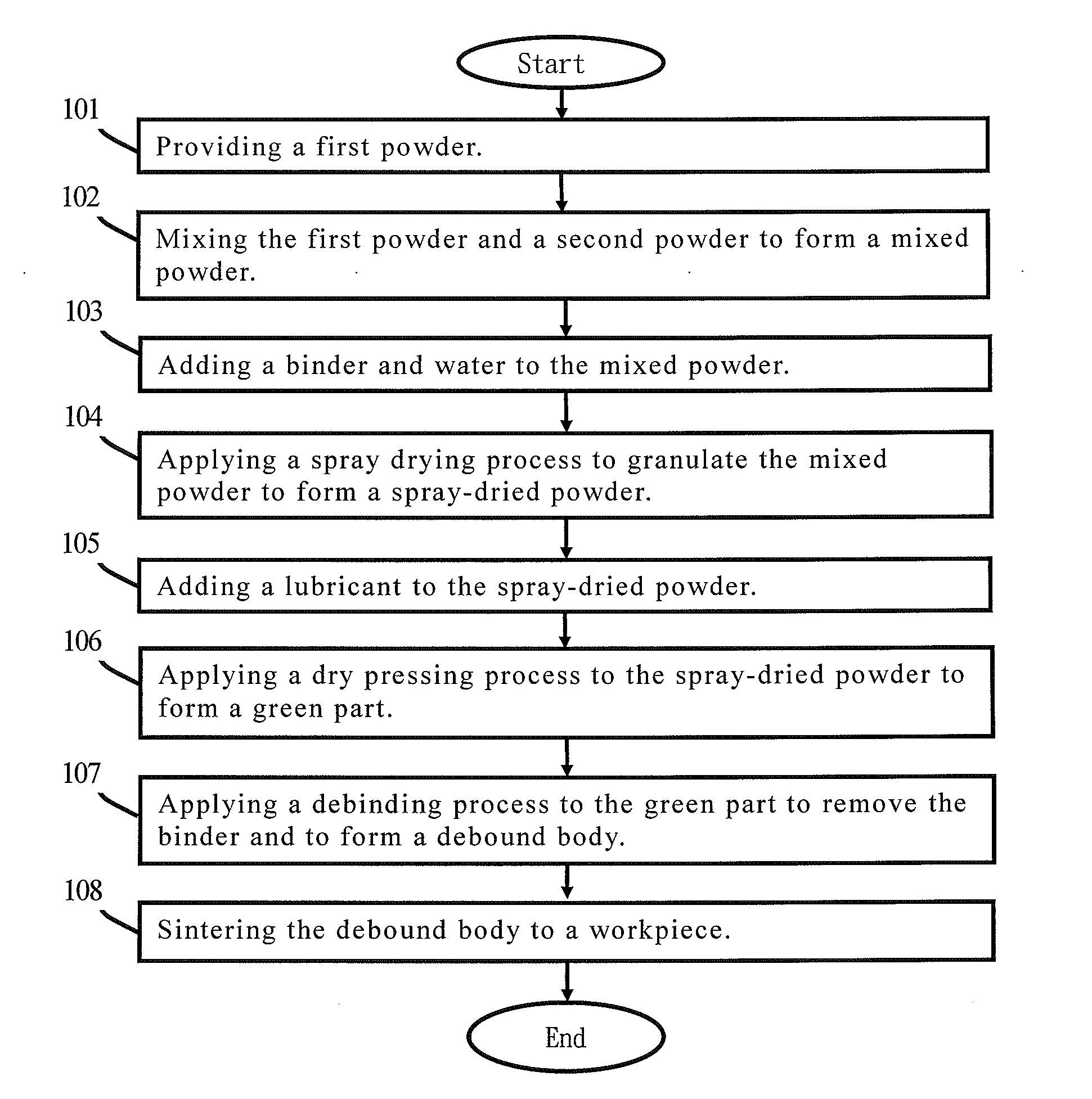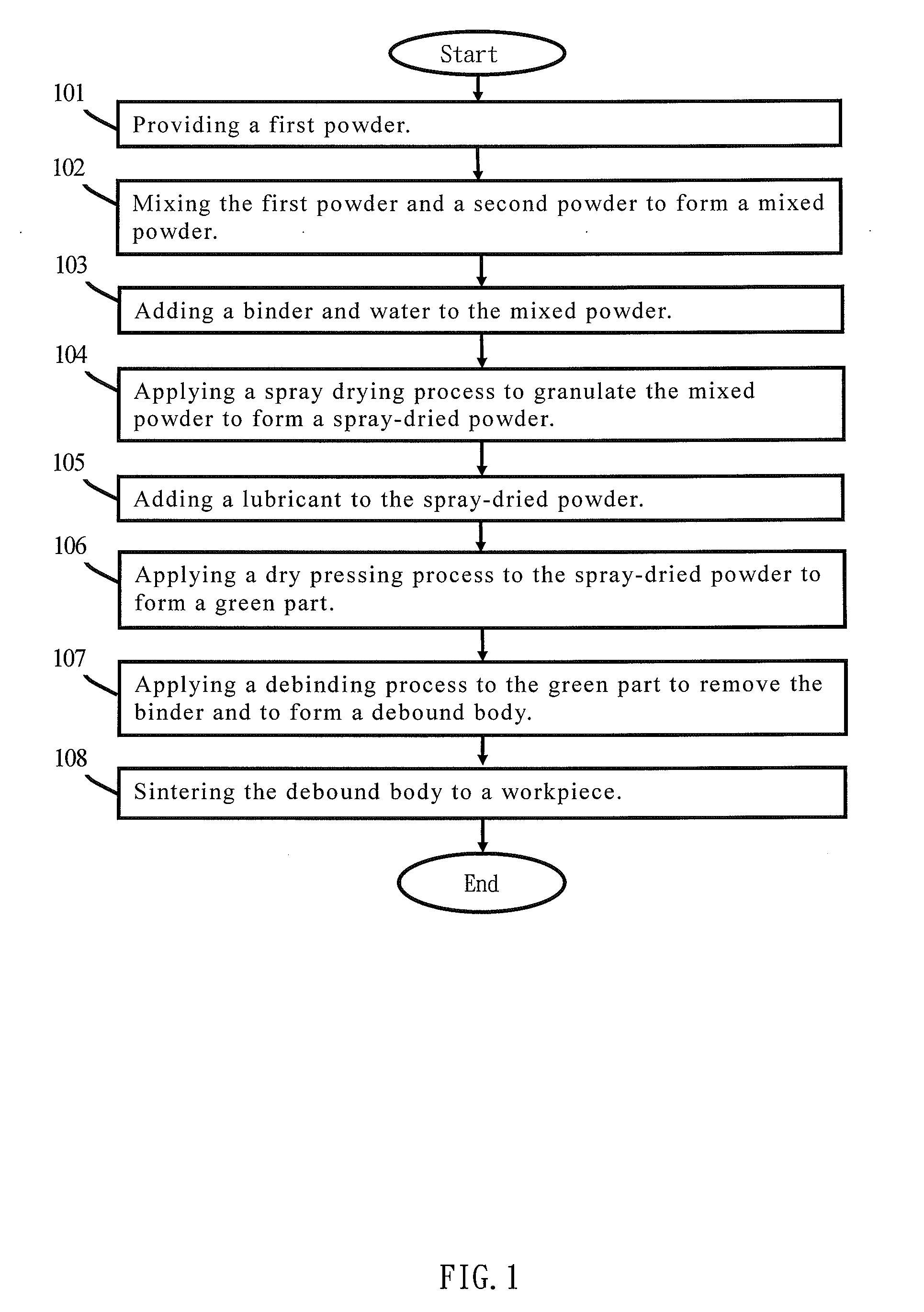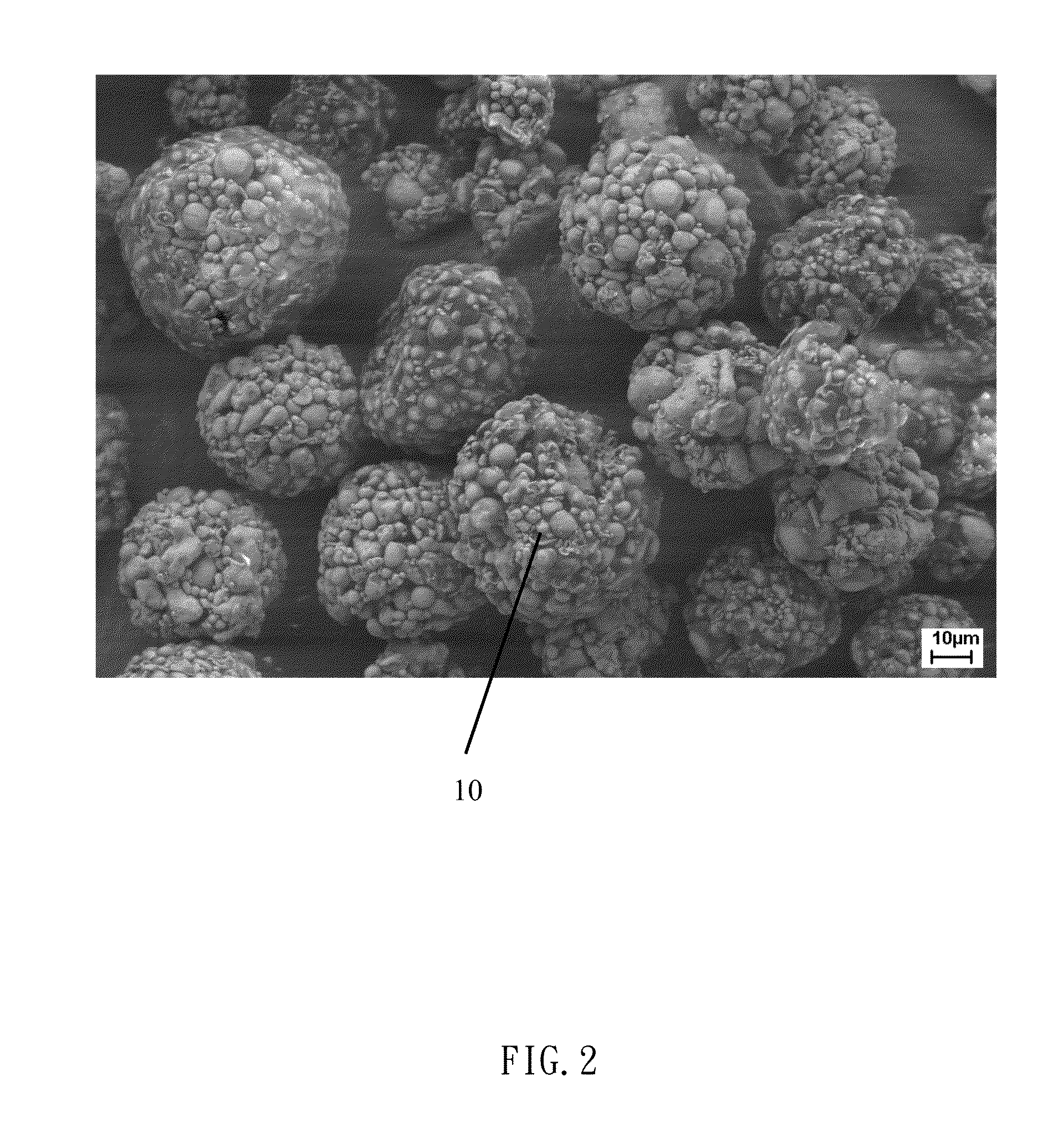Method of Producing Workpiece and Workpiece Thereof
- Summary
- Abstract
- Description
- Claims
- Application Information
AI Technical Summary
Benefits of technology
Problems solved by technology
Method used
Image
Examples
first embodiment
[0040]In the first embodiment, the first powder is made of Fe-17Cr (430L stainless steel), which comprises 17 wt % chromium and small amounts of silicon, manganese, and carbon, wherein the carbon is 0.02 wt % of the first powder. The Fe-17Cr is a stainless steel powder of ferrite type; its hardness is between 160 HV to 180 HV, and its mean particle size is 10.2 μm. The composition of the second powder comprises iron, chromium, nickel, copper, molybdenum, and small amounts of silicon, manganese, carbon, and niobium. The second powder is made of Fe-17Cr-12Ni-2Mo (316L stainless steel) powder, copper elemental powder, and niobium elemental powder, wherein the 316L stainless steel powder comprises 17 wt % chromium, 12 wt % nickel, 2 wt % molybdenum, and small amounts of silicon, manganese, and carbon. The mean particle sizes of the 316L stainless steel powder, the copper elemental powder, and the niobium elemental powder are all less than 15 μm. The composition of the mixed powder mixed...
second embodiment
[0044]In the second embodiment, the first powder is made of pre-alloyed powder of Fe-17Cr (430L stainless steel), which comprises 17 wt % chromium and small amounts of silicon, manganese, and carbon, wherein the carbon is 0.025 wt % in the first powder. The first powder is a stainless steel powder of ferrite type; the hardness is 180 HV, and the mean particle size is 10.3 μm. The second powder is made of nickel, copper, niobium, and iron, wherein the nickel and the copper are added in the form of elemental powders, and the iron and the niobium are added in the form of pre-alloyed powder of Fe-60Nb. The composition of the mixed powder mixed from the first powder and the second powder is substantially similar to the pre-alloyed powder of the second comparison. In the mixed powder, the weight percent of carbon is 0.028 wt %, the weight percent of silicon is 0.70 wt %, the weight percent of manganese is 0.10 wt %, the weight percent of chromium is 16.0 wt %, the weight percent of nickel...
third embodiment
[0050]In the third embodiment, the first powder is made of pre-alloyed powder of Fe-12Cr, which comprises 12 wt % chromium and small amounts of silicon, manganese, and carbon, wherein the carbon is 0.02 wt %. The first powder is a 410L stainless steel powder; the hardness is 160 HV, and the mean particle size is 12.0 μm. The second powder comprises a pre-alloyed powder of Fe-45V, a small amount of graphite elemental powder, and a small amount of molybdenum elemental powder. The composition of the mixed powder mixed from the first powder and the second powder is substantially similar to that of the SKD11 tool steel powder of the third comparison. In the mixed powder, the weight percent of carbon is 1.52 wt %, the weight percent of silicon is 0.26 wt %, the weight percent of manganese is 0.40 wt %, the weight percent of chromium is 11.7 wt %, the weight percent of molybdenum is 1.01 wt %, the weight percent of vanadium is 0.38 wt %, and the rest is iron.
[0051]Appropriate amounts of wa...
PUM
| Property | Measurement | Unit |
|---|---|---|
| Temperature | aaaaa | aaaaa |
| Length | aaaaa | aaaaa |
| Density | aaaaa | aaaaa |
Abstract
Description
Claims
Application Information
 Login to View More
Login to View More - R&D Engineer
- R&D Manager
- IP Professional
- Industry Leading Data Capabilities
- Powerful AI technology
- Patent DNA Extraction
Browse by: Latest US Patents, China's latest patents, Technical Efficacy Thesaurus, Application Domain, Technology Topic, Popular Technical Reports.
© 2024 PatSnap. All rights reserved.Legal|Privacy policy|Modern Slavery Act Transparency Statement|Sitemap|About US| Contact US: help@patsnap.com










